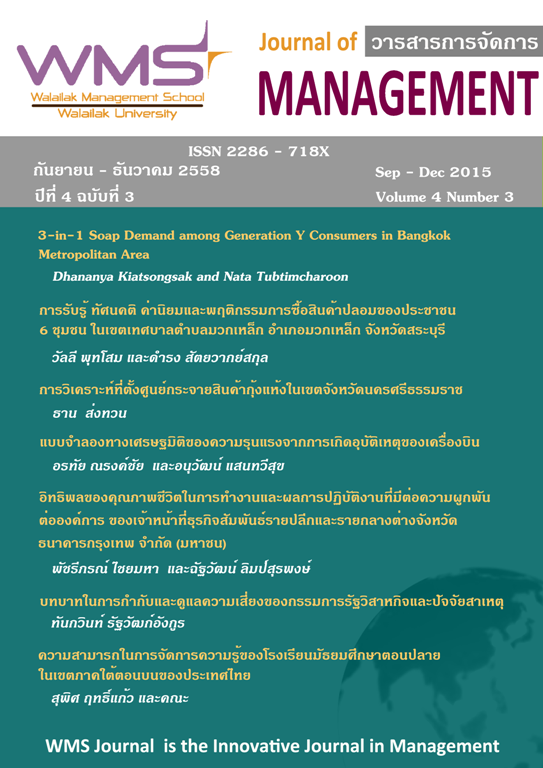Econometrics Model of Severity of Airplane Accident Occurrences
Main Article Content
Abstract
Article Details
References
Ayres, M., Shirazi, H., Carvalho, R., Hall, J., Speir, R., Arambula, E., ... & Pitfield, D. 2013. Modelling the location and consequences of aircraft accidents. Safety science, 51(1), 178-186.
Bazargan, M., & Guzhva, V. S. 2011. Impact of gender, age and experience of pilots on general aviation accidents. Accident Analysis & Prevention, 43(3), 962-970.
Bigün, E. S. 1995. Risk analysis of catastrophes using experts' judgements: An empirical study on risk analysis of major civil aircraft accidents in Europe.European journal of operational research, 87(3), 599-612.
Caldwell, J. A. 2005. Fatigue in aviation. Travel Medicine and Infectious Disease, 3(2), 85-96.
Campbell, G. S., & Lahey, R. 1984. A survey of serious aircraft accidents involving fatigue fracture. International Journal of Fatigue, 6(1), 25-30.
Chang, R. C. 2014. Examination of excessive fuel consumption for transport jet aircraft based on fuzzy-logic models of flight data. Fuzzy Sets and Systems.
Chen, H., & Wang, G. 2014. Pilot Control Behavior Analysis Using Cutoff Frequency and Power Frequency for a Civil Transport Aircraft Encountering Turbulence Based on Flight Simulation. Procedia Engineering, 80, 424-430.
Dambier, M., & Hinkelbein, J. 2006. Analysis of 2004 German general aviation aircraft accidents according to the HFACS model. Air medical journal, 25(6), 265-269.
Daramola, A. Y. 2014. An investigation of air accidents in Nigeria using the Human Factors Analysis and Classification System (HFACS) framework. Journal of Air Transport Management, 35, 39-50.
Goode, J. H. 2003. Are pilots at risk of accidents due to fatigue?. Journal of safety research, 34(3), 309-313.
Koo, T. T., Caponecchia, C., & Williamson, A. 2015. Measuring the effect of aviation safety risk reduction on flight choice in young travellers. Safety Science, 73, 1-7.
Lasczkowski, G., Hasenfuss, S., Verhoff, M., & Weiler, G. 2002. An unusual airplane crash-deadly life saver: Unintentional activation of an automated reserve opening device causing airplane accident. Forensic science international, 125 (2), 250-253.
Oster, C. V., Strong, J. S., & Zorn, C. K. 2013. Analyzing aviation safety: Problems, challenges, opportunities. Research in transportation economics, 43(1), 148-164.
Reynolds, T. G. 2014. Air traffic management performance assessment using flight inefficiency metrics. Transport Policy, 34, 63-74.
Rhodes, S. L. 1993. The effect of the environment on aviation weather safety: Meteorological assessment for the new Denver airport. Environmental Impact Assessment Review, 13(1), 63-74.
Shao, P. C., Chang, Y. H., & Chen, H. J. 2013. Analysis of an aircraft accident model in Taiwan. Journal of Air Transport Management, 27, 34-38.
Wang, Z. 2011. Study of Evolution Mechanism on Aircraft Sudden Failure. Procedia Engineering, 15, 1303-1307.


